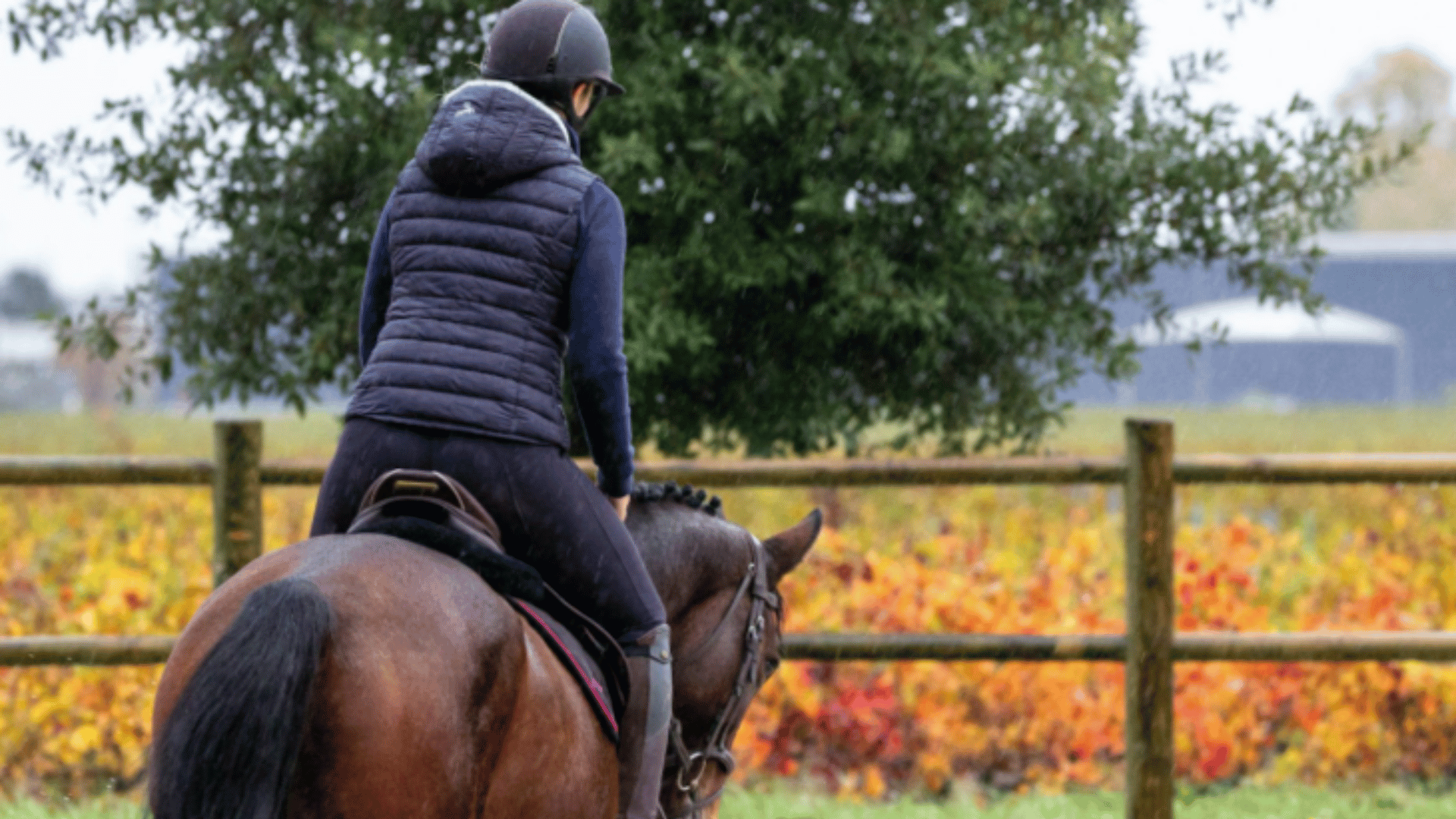Horse Napping: What Causes It & How To Prevent It

Horse napping: What causes it and how to prevent it
Horse napping is a common yet frustrating behaviour that many horse owners encounter. A napping horse is one that refuses to move forward, often planting itself, rearing, spinning, or even turning and heading back towards home or another familiar location. This behaviour can be a challenge for new and experienced equestrians alike. However, with a little patience and the right training strategies, it’s possible to effectively address and prevent the issue.
In this guide, we’ll explore what horse napping is, and give you some tips on how to prevent it. We’ll cover:
- What is napping in horses?
- What causes a nappy horse?
- How to stop a horse napping
- Address physical issues first
- Build confidence through gradual exposure
- Reinforce good behaviour
- Groundwork for nappy horses
- Improve your riding technique
- Increase mental stimulation
- Encourage social interaction
- Can napping in horses be cured?
What is napping in horses?
When we talk about napping in horses, we’re referring to the horse’s tendency to resist moving forward, often due to fear, uncertainty, or simply wanting to return to a familiar place. This behaviour typically occurs when a horse is in an uncomfortable or unfamiliar situation, such as hacking on a new route or being in a new arena.
Napping can also be an indicator of a horse trying to avoid work, which may stem from pain, discomfort, or a lack of motivation. In more severe cases, a horse may come to a complete stop, refuse to move, or attempt to turn around and head back home. Understanding the underlying causes of horse napping is essential for determining the appropriate approach to address and correct the behaviour.
What causes a nappy horse?
Several factors can lead to a “nappy horse.” Understanding your horse’s behaviour is key to recognising these factors and helping determine the best course of action to address the issue. Here are some potential causes of horse napping:
- Physical discomfort. If a horse is in pain — whether from an ill-fitting saddle, sore muscles, or dental problems — it may resist moving forward. In these cases, identifying and addressing the source of discomfort should always be the first step.
- Lack of confidence: Horses that feel uncertain or anxious, especially in unfamiliar environments, may use napping as a way to cope with their lack of confidence.
- Reinforced behaviour: Napping can become a habit if the horse has previously been allowed to return to a place of comfort after an episode. If a horse has learned that this behaviour gets them what they want, they are more likely to keep doing it.
- Social instinct: Horses are social animals, and when separated from companions, especially during solo outings, they may nap as a way to seek a return to the herd.
- Mental stimulation or boredom: Horses that are underworked, bored, or lack proper mental stimulation may develop napping as a coping mechanism to deal with their idle state.
How to stop a horse napping
Now that we’ve covered what napping in horses is and the factors that contribute to it, here are some effective training strategies that can help address the issue:
Address physical issues first
Before addressing behavioural issues, always rule out any potential causes of physical discomfort. If your horse is in pain, it’s unlikely that they will respond positively to training. Common physical problems that can lead to a horse napping include:
- Poor saddle fit: An ill-fitting saddle can cause discomfort, leading to napping behaviour. Ensure that your saddle fits properly and doesn’t pinch or rub. Read our saddlery advice to help you select the best saddle for your companion.
- Dental issues: Horses with dental problems can experience pain while chewing or carrying a bit, which can cause them to resist movement. Your vet or equine dentist can help make sure your horse’s teeth are in good condition.
- Joint or muscle pain: Arthritis or sore muscles can also make a horse reluctant to move forward. This is especially common in older horses. Work with a vet or equine therapist to identify and address any pain issues.
Build confidence through gradual exposure
Horses that are fearful or anxious may nap as a coping mechanism. To build their confidence, gradually expose them to new environments or experiences in a controlled manner. Start by introducing small, non-threatening changes and progressively work your way up to more challenging situations. Consistently reward calm and confident behaviour, and be patient as the horse learns to trust you and its surroundings.
Reinforce good behaviour
If you allow your horse to return to a familiar place like their stable when they nap, this can
reinforce the idea that napping leads to the desired outcome. Instead, encourage forward movement and persist with gentle cues until the horse moves past the point of resistance. Once the horse moves forward willingly, offer positive reinforcement like praise, a treat, or a break.
Groundwork for nappy horses
Groundwork is an essential tool when dealing with a nappy horse. By working on some simple ground exercises, you can build your horse’s confidence and focus before riding. Groundwork for a nappy horse involves establishing clear communication, control, and respect through lunging, leading, and backing up your horse. This creates a strong foundation that can be transferred to under-saddle work, helping the horse feel more secure and less likely to nap while riding.
Key groundwork exercises include:
- Leading exercises: Practice leading your horse in a controlled manner, ensuring it follows your cues without hesitation. This reinforces your leadership role.
- Backing up: Teaching your horse to back up on command can help establish control and confidence. If your horse starts to nap, you can ask it to back up, which can break the resistance and shift its focus.
- Lunging: Lunging helps your horse release energy and stay focused on the task at hand. It can also build physical stamina, reducing the likelihood of resistance when you mount.
For more tips and ideas, watch the groundwork episode of our series Listening to Horses.
Improve your riding technique
Your riding technique can greatly impact a horse’s behaviour, especially if your horse is napping. Ensure that you’re not inadvertently reinforcing the napping behaviour by being either too passive or reactive in these situations. Here are a few tips:
- Maintain a steady, forward rhythm: Horses respond to the rhythm of their rider. If you’re constantly pulling back or pausing, your horse may interpret this as a signal to stop. A steady, consistent rhythm encourages forward movement.
- Pay attention to your posture: Being off-balance can also exacerbate napping. Read our riding position guide to make sure you’re maintaining proper posture for rides. Watch our series on positioning for more tips.
- Use leg pressure effectively: Gently but consistently apply leg pressure when you need your horse to move forward. Avoid excessive use of the reins, as this can lead to resistance. Instead, focus on creating clear, steady communication using your legs and seat.
- Stay calm and patient: Avoid reacting with frustration or aggression when your horse naps. Horses are sensitive to their rider’s emotions and can easily pick up on tension. Staying calm and relaxed will help the horse feel more secure and less likely to resist.
Increase mental stimulation
Horses that are underworked or mentally bored can develop napping habits. It’s important to provide variety in your horse’s routine to keep them engaged and motivated. Some ways to provide more stimulation include:
- Hacking: Hacking out on different trails gives your horse new experiences and keeps them mentally engaged.
- Obstacle courses: Whether in a paddock or arena, setting up small obstacles such as poles or cones will encourage your horse to think and move in different ways.
- Change the routine: Mix up the location, type of work, or even the pace of your rides to keep things fresh for both you and your horse.
For more ways to create variety in your animal’s routine, have a look at our horse enrichment guide.
Encourage social interaction
If your horse naps because it is separated from its herd, try to incorporate more social interaction. If possible, take it out with other horses or provide opportunities to interact with companions. Alternatively, you could use a companion animal to reduce stress.
Can napping in horses be cured?
With a little consistency, patience, and the right training, napping in horses can be cured, or at least drastically improved. The key is to understand that napping is often a learned behaviour, and with proper groundwork, appropriate riding techniques, and mental stimulation, you can prevent and reduce the occurrence of napping. Over time, your horse will develop more confidence, learn to trust your leadership, and become more willing to move forward without resistance.
Horse napping can be a challenge, but with the right approach, it can be managed and cured. By following these tips and staying patient, you’ll be well on your way to resolving the issue of a nappy horse.
Here at Horse & Country, we offer a huge catalogue of information for horse lovers, including training tutorials, advice and how-to guides, and documentaries, as well as live event coverage. Subscribe to our service today to gain access to all of our exclusive equestrian content.







